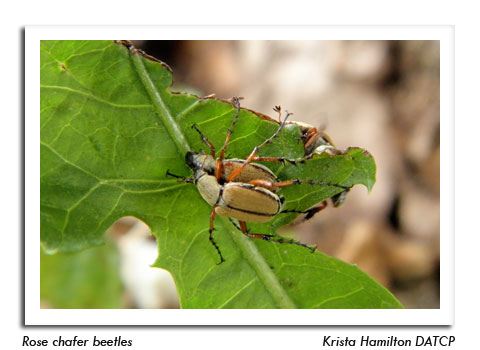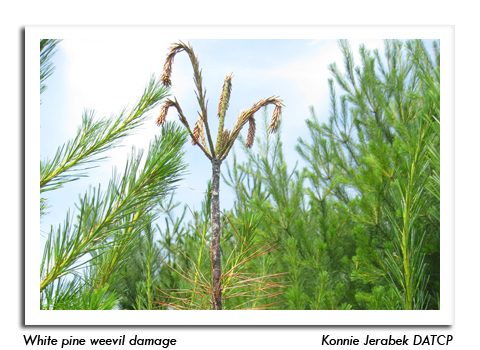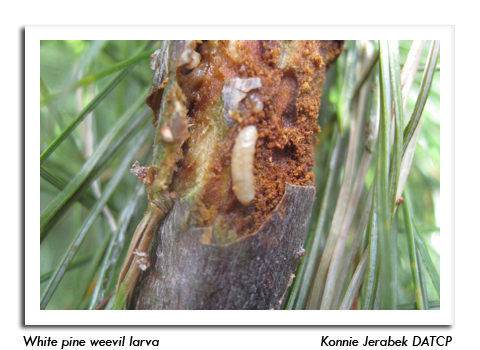
 |
|
|
Nursery & Forest
Volume 57 Number 11 Date 06/21/2012 ROSE CHAFER - Beetles are especially prevalent in the central part of the state. The moderate-sized, tan scarabs are abundant in home gardens, nurseries and soybean fields and have been afflicting homeowners, gardeners and plant retailers for the last two weeks. A nursery near Fremont in Waupaca County was reportedly inundated with beetles last week, although the problem appears to have diminished since then. Similar to the Japanese beetle, this pest feeds on the flowers and foliage of a wide variety of plants, including apple, cherry, corn, dahlia, elder, elm, foxglove, geranium, grape, hollyhock, hydrangea, pear, peony, poppy, rose, Virginia creeper, wisteria and many other agricultural and ornamental crops. Populations are expected to subside by early July. WINGED EUONYMUS SCALE - Nursery inspectors noted overwintered females (the immobile stage) on several large containerized euonymus shrubs in a St. Croix County nursery. The plants, which were ordered removed from sale by the inspector, may be returned to the wholesale grower or destroyed, but cannot be treated on site and sold at a later time. This scale insect inhibits photosynthesis, reduces plant vigor and may kill entire plants. Control measures include pruning out and destroying infested branches before the mobile crawlers emerge, or applying insecticidal soaps or oils to newly hatched crawlers later this month, with four applications 10-12 days apart. Nursery retailers are advised to carefully examine incoming euonymus for this pest and reject any infested plants. WHITE PINE APHID - Moderate-heavy colonies are infesting white pines in Clark County. These large, brown or black aphids generally have no effect on conifers, except in drought years or in high population situations when the aphids produce large quantities of honeydew which is colonized by sooty mold fungi. This can cause flagging and death of trees. Black sooty mold and ant activity are both indicators of aphid feeding. FIR-FERN RUST - This needle rust was prevalent on concolor and balsam firs grown in close proximity to ferns in Clark and Dunn County nursery and Christmas tree fields inspected earlier in the week. Symptoms on firs include chlorotic, yellow needles with white pustules on the undersides. Infected needles dry out and drop prematurely, often in quantities that render trees unmarketable at fall harvest. Management options include removing alternate fern hosts, particularly bracken ferns, from the periphery and within fields by mowing or applying herbicide sprays. WHITE PINE WEEVIL - Scouting for evidence of larval attack, such as wilted leaders and brown, discolored needles on the top lateral growth is recommended at this time. This insect can be controlled by pruning the infested area 6-10 inches below the wilted leader before adults emerge in July. Pruned tops should be removed from fields and properly disposed of to prevent reinfestation. --Konnie Jerabek, DATCP Nursery Inspector GYPSY MOTH TREATMENT - From June 18-19, approximately 42,500 acres were treated with mating disruption flakes in Buffalo, Dunn, Eau Claire, Pepin and Rusk counties. Another 61,300 acres in Bayfield and Douglas counties are scheduled for treatment from June 27-29, marking the end of the 2012 spray season. GYPSY MOTH SURVEY - As of June 20, trappers have set 12,948 traps or 68% of the estimated total of 19,000 traps. Moth flight is expected to begin between June 27 and July 6 in southern Wisconsin and a week later in northern areas. --Nkauj Vang, DATCP Gypsy Moth Program 





|
|
|